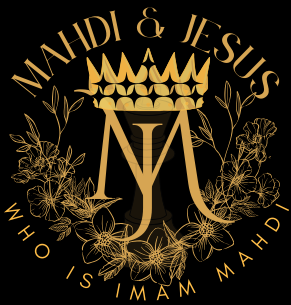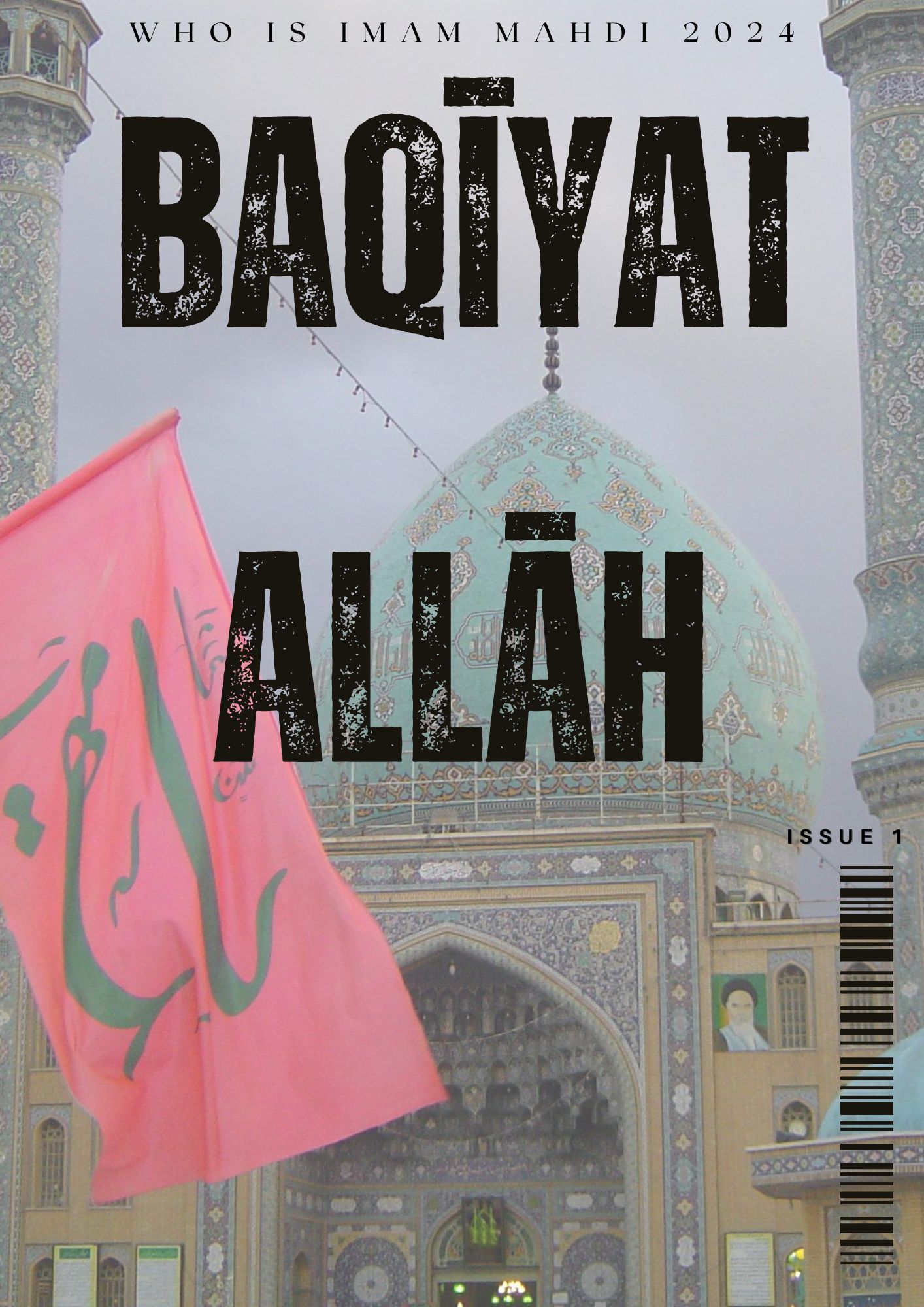
Age and Features
‘Umran ibn al-Husayn said: I said to the Messenger of Allah (S): “Kindly describe that man (al-Mahdi) to me and mention some of his characteristics.” The Prophet (S) said: “He is from my progeny; his stature is that of the men of the Children of Israel—firm and robust; at the time when my ummah is in difficulty and affliction, he will rise up; the color of his countenance is similar to that of the Arabs; his appearance is like that of a forty-year old; his face will shine like that of a half moon; he will fill the earth with justice and equity when it would have been full of oppression and injustice; he will take charge of affairs for twenty years and he will conquer all the cities of kufr such as Constantinople and Rome…” 1
Imam Hasan al-Mujtaba (‘a) said: “…God will extend the age of Hadrat al-Mahdi (‘atfs) during the period of occultation (ghaybah). Thereafter, by His infinite power, He will let him appear in the form of a young man less than forty years old.” 2
Imam as-Sadiq (‘a) said: “During the advent of Hadrat al-Qa’im (‘atfs), the people will deny him and no one will cling to him except those with whom God has made a covenant in the ‘alam adh-dharr. 3 He (‘atfs) will appear with a perfect, proportioned (muwaffaq) and normal young face.” 4
The Commander of the Faithful (‘a) said: “At the time of the uprising of al-Mahdi (‘atfs), his age will be between thirty and forty.” 5
Marwi said: I asked Imam ar-Rida (‘a): “What is the sign and symbol of your Qa’im at the time of his uprising and appearance?” The Imam (‘a) answered: “The sign is that he (‘atfs) would be old but he will appear young such that anyone who would look at him will think that he (‘atfs) is forty years old or even younger. Another sign is that the passage of time will not render him old till such time that his life would end.” 6
Imam as-Sadiq (‘a) said: “Certainly, like Ibrahim Khalilullah (Abraham the Friend of Allah), Wali Allah (Friend of Allah) (Imam al-Mahdi) will be one hundred and twenty years old, and he will appear with a youthful perfect thirty-year-old face and visage.” 7
The late Majlisi said: “Perhaps it (one hundred and twenty years) means the term of his (‘atfs) governance and rule, or that it is his age but God has extended it.”
What is meant by the word “proportioned” (muwaffaq) is the normalcy of the bodily limbs and it is an allusion to his being in middle age or the last phase of youth. 8
There are also other statements concerning the age of Hadrat al-Mahdi (‘atfs) at the time of the advent (zuhur). Artat said: “Hadrat al-Mahdi (‘atfs) will be sixty years old (at the time of the advent).” 9 Ibn Hammad said: “Hadrat al-Mahdi (‘atfs) will be eighteen years old.” 10
Bodily Characteristics
Abu Basir said: I said to Imam as-Sadiq (‘a): “I have heard from your father that the Imam of the Time (‘atfs) has a broad chest and wide shoulders.” He (‘a) said: “O Abu Muhammad! My father tried on the armor of the Prophet (S) but it was so big for him that it would touch the floor. I also put it on but it was too large for my stature. That armor is as appropriate and fitting for Hadrat al-Qa’im (‘atfs) as it was for the Prophet (‘atfs). Its lower portion is short to the extent that anyone who saw it would think that they have formed a knot around it.” 11
Riyan ibn Salt said: I asked Imam ar-Rida (‘a): “Are you the master of this affair?” He (‘a) replied: “I am the Imam and master of the affair but not the master of the affair who will fill the earth with justice and equity at the time when it would be full of oppression and injustice. How could I be the master of that affair when you can see my physical limitations?
Hadrat al-Qa’im is he who, at the time of his advent, will be of old age but he will look young. He will have a strong and well-built body such that if he would extend his hand toward the largest tree, he would be able to uproot it; if he shouted across the mountains, the rocks will crack and be pulled up. He will have the staff of Musa (Moses) (‘a) and the ring of Sulayman (Prophet Solomon) (‘a).” 12
His Moral Excellences
Like the other infallible Imams, Hadrat al-Mahdi (‘atfs) will have special moral excellences. As the Infallibles (‘a) are perfect human beings and are the models and exemplars of mankind in every aspect, they have the most excellent morality.
Hadrat ar-Rida (‘a) said: “Al-Mahdi (‘atfs) will be the most knowledgeable, humble and virtuous man (of his time). Of all men (during his time) he will be the most forgiving, brave and pious.” 13
His Fear of God
Ka‘b said that Hadrat al-Mahdi’s (‘atfs) fear of and submissiveness to God is like the submissiveness of the eagle to its two wings. 14 Perhaps, what is meant by Ka‘b is that although the eagle is a powerful bird, this power depends on the degree of the assistance of its two wings. If the wings would not assist it for only a moment, it will fall to the ground.
Similarly, although Hadrat al-Mahdi (‘atfs) would be the most powerful divine leader, this power emanates from the Essence of God, the Exalted. If God would not help him for one moment, he will not have any capability to continue his work. Therefore, in facing the Divine Essence he has the utmost submissiveness, obeisance and fear.
Based on Ibn Tawus’ narration, 15 the submissiveness of al-Mahdi (‘atfs) to God has been likened to the submissiveness of the two points of a spear. The speed of action and precision involved in aiming at a target and throwing a spear depend on its two points which are like two wings; if one point is curved, it will miss the target.
Perhaps, it means that the power of al-Mahdi (‘atfs) emanates from God and totally depends on divine succor.
His Asceticism (zuhd)
Imam as-Sadiq (‘a) said: “Why are you in a hurry for the advent of Hadrat al-Mahdi? God knows that his clothing is rough and coarse; his food is barley bread; his government is the government of the sword; and his death is at the point of the sword.” 16
‘Uthman ibn Hammad said: I was present in the assembly of Imam as-Sadiq (‘a) when a person said to the Imam (‘a): “‘Ali ibn Abi Talib used to wear coarse clothing that cost only four dirhams while you wear valuable clothing!” In reply, the Imam (‘a) said: “‘Ali (‘a) used to wear that clothing, which was not condemnable and detestable at that time.”
The best clothing in every period is the clothing of the people of that period. At the time when our Qa’im would stage the uprising, he will wear something similar to the clothing of ‘Ali (‘a) and he will adopt the policy and course of action of ‘Ali (‘a).” 17
His Garments
The hadiths tell something about the special garment of Hadrat al-Qa’im (‘a) at the time of his advent. Some mention the shirt of the Messenger of Allah (S) while others mention the shirt of Prophet Yusuf (Joseph) (‘a) as his garments at the time of his advent.
Ya‘qub ibn Shu‘ayb said: Imam as-Sadiq (‘a) said: “Would you not like me to show you the shirt to be worn by Hadrat al-Qa’im at the time of his advent?” I said: “Of course, I’d like to see it.” The Imam (‘a) asked for a small chest. He opened it and took a denim shirt out of it and opened it. There was a blood stain in the corner of its left sleeve.
The Imam (‘a) said: “It is the shirt of the Prophet (S) which he was wearing on the day when his four front teeth were broken (in the Battle of Uhud). Hadrat al-Qa’im will stage the uprising wearing this shirt.” I kissed the blood (stain) and put it on my eyes. Then, the Imam (‘a) wrapped up the clothing and returned it. 18
Mufaddal ibn ‘Umar said: Imam as-Sadiq (‘a) said: “Do you know what the shirt of Yusuf (Joseph) was?” I said: “No.” The Imam (‘a) said: “Since they kindled a fire for Ibrahim (Abraham) (‘a), Jibra’il (Archangel Gabriel) brought a shirt for him and let him wear it so that the heat and cold would not harm him. As the time of his departure from the world arrived, he wrapped it in a prayer cover and placed it on the arms of his son Ishaq (‘a).
Ishaq gave it in turn to his son Ya‘qub (Jacob) (‘a). When Yusuf (‘a) was born, Ya‘qub placed it on the arms of Yusuf. Something happened to Yusuf and he became the ‘Aziz of Egypt. When Yusuf brought it out from the two prayer covers, Ya‘qub smelled it and made the statement which can be read in the Qur’an regarding Yusuf: “I sense the scent of Joseph, if you will not consider me a dotard.” 19 It is the same shirt that has come down from heaven.”
I asked: “May I be your ransom! In whose possession is the shirt now?” The Imam said: “It is in the possession of its owner; the shirt will be with our Qa’im when he appears.” Then the Imam said: “Any knowledge or any other things acquired as a legacy by any prophet are all bequeathed to Muhammad (S).” 20
His Weapon
The Messenger of Allah (S) said to ‘Ali (‘a): “When our Qa’im rises up and the mission of his advent arrives, he will have a sword that will tell him: ‘O Friend (wali) of Allah! Rise up and slay your enemies’.” 21
Imam as-Sadiq (‘a) said: “During his advent Hadrat al-Mahdi (‘atfs) will wear the shirt the Prophet (S) had worn during the Battle of Uhud as well as the Prophet’s turban and armor on his body. He will take hold of Dhu’l-Fiqar, the sword of the Prophet (S), unsheathe it and for the period of eight months the slain among the wicked will be piled in mounds of corpses.” 22
Jabir Ja‘fi reported that Imam al-Baqir (‘a) said: “Hadrat al-Mahdi (‘atfs) will appear along with his vizier and three hundred or so (thirteen) persons of his followers in Mecca between the station of rukn and maqam having the covenant and instruction of the Prophet (S) as well as his (S) banner and weapon.
Then, the harbinger from the sky above Mecca will call out the Imam’s name and the wilayah (guardianship) such that all the people on earth will hear that name; his name is that of the Prophet (Muhammad) (S).” 23 24 25
- Ibn Tawus, Malahim, p. 142.[↩]
- Kamaluddin, vol. 1, p. 315; Kifayah al-Athar, p. 224; A‘lam al-Wara, p. 401; Al-Ihtijaj, p. 289.[↩]
- ‘Alam adh-dharr: the world prior to the creation of human beings on earth in which God obtained their acknowledgment of His divinity and lordship: “When your Lord took from the Children of Adam, from their loins, their descendants and made them bear witness over themselves, (He said to them,) ‘Am I not your Lord?’ They said, ‘Yes indeed! We bear witness.’ (This,) lest you should say on the Day of Resurrection, ‘Indeed we were unaware of this’.” (Surah al-A‘raf 7:172) Some exegetes (mufassirin) have said that it refers to the appearance of the souls of Children of Adam in the world of the soul (‘alam ar-ruh) and their testimony to the unity of God and His lordship in the mundane and celestial worlds. It was meant that they could not say that they were not aware of that event or fact (the Day of Resurrection or the unity of God).[↩]
- Nu‘mani, Ghaybah, p. 188; ‘Aqd ad-Durar, p. 41; Bihar al-Anwar, vol. 52, p. 287; Yanabi‘ al-Mawaddah, p. 492.[↩]
- Ihqaq al-Haqq, vol. 19, p. 654.[↩]
- Kamaluddin, vol. 2, p. 652; A‘lam al-Wara, p. 435; Khara’ij, vol. 3, p. 1170.[↩]
- Bihar al-Anwar, vol. 52, p. 283.[↩]
- Ibid.[↩]
- Ibn Tawus, Malahim, p. 73; Kanz al-‘Ummal, vol. 14, p. 586.[↩]
- Ibn Hammad, Fitan, p. 102.[↩]
- Basa’ir ad-Darajat, vol. 4, p. 188; Ithbat al-Hudah, vol. 3, pp. 440, 520; Bihar al-Anwar, vol. 52, p. 319.[↩]
- Kamaluddin, vol. 2, p. 48; A’lam al-Wara, p. 407; Kashf al-Ghumah, vol. 3, p. 314; Bihar al-Anwar, vol. 52, p. 322; Wafi, vol. 2, p. 113; Ithbat al-Hudah, vol. 3, p. 478.[↩]
- Yanabi‘ al-Mawaddah, p. 401; Ithbat al-Hudah, vol. 3, p. 537; Ihqaq al-Haqq, vol. 13, p. 367.[↩]
- Ibn Hammad, Fitan, p. 100; ‘Iqd ad-Durar, p. 158; Ibn Tawus, Malahim, p. 73; Muttaqi Hindi, Burhan, p. 101.[↩]
- Ibn Tawus, Malahim, p. 73.[↩]
- Nu‘mani, Ghaybah, p. 233-234 with a slight difference; Bihar al-Anwar, vol. 52, p. 354.[↩]
- Al-Kafi, vol. 6, p. 444; Bihar al-Anwar, vol. 41, p. 159; vol. 47, p. 55.[↩]
- Nu‘mani, Ghaybah, p. 243; Ithbat al-Hudah, vol. 3, p. 542; Hilyah al-Abrar, vol. 2, p. 575; Bihar al-Anwar, vol. 52, p. 355.[↩]
- Surah Yusuf 12:94.[↩]
- Al-Kafi, vol. 1, p. 232; Kamaluddin, vol. 2, p. 674; Bihar al-Anwar, vol. 52, p. 327.[↩]
- Kifayah al-Athar, p. 263; Bihar al-Anwar, vol. 36, p. 409; ‘Awalim, vol. 15, section 3, p. 269; Ithbat al-Hudah, vol. 3, p. 563.[↩]
- Nu‘mani, Ghaybah, p. 308; Bihar al-Anwar, vol. 52, p. 223. See Shaykh al-Mufid, Al-Irshad, p. 275.[↩]
- Al-Usul as-Sittah ‘Ashar, p. 79; Ithbat al-Hudah, vol. 3, p. 588; Bihar al-Anwar, vol. 26, p. 209; Mustadrak al-Wasa’il, vol. 11, p. 38.[↩]
- An Overview of Imam al-Mahdi’s (atfs) Government, Ayatullah Najmuddin Tabasi[↩]
- Imam Reza (A.S.) Network[↩]

